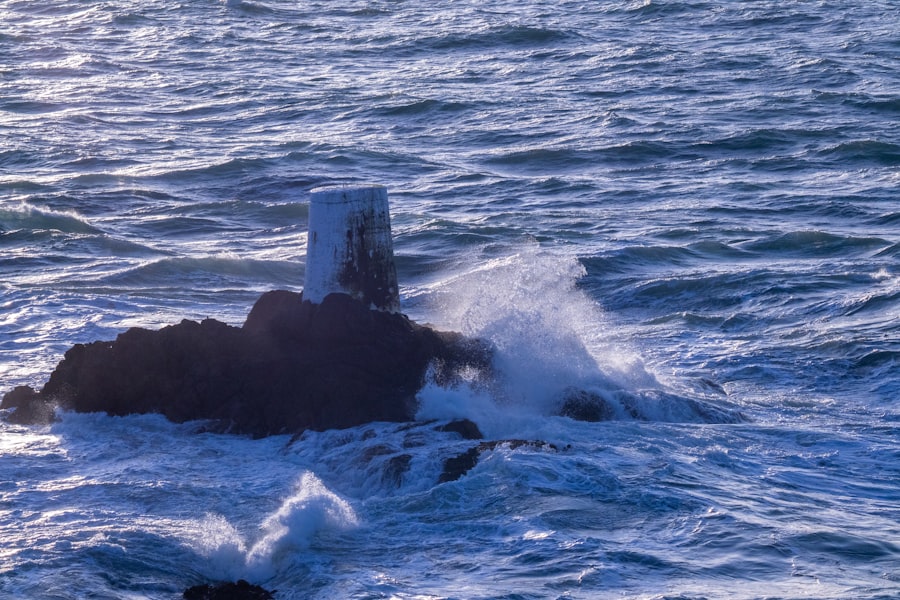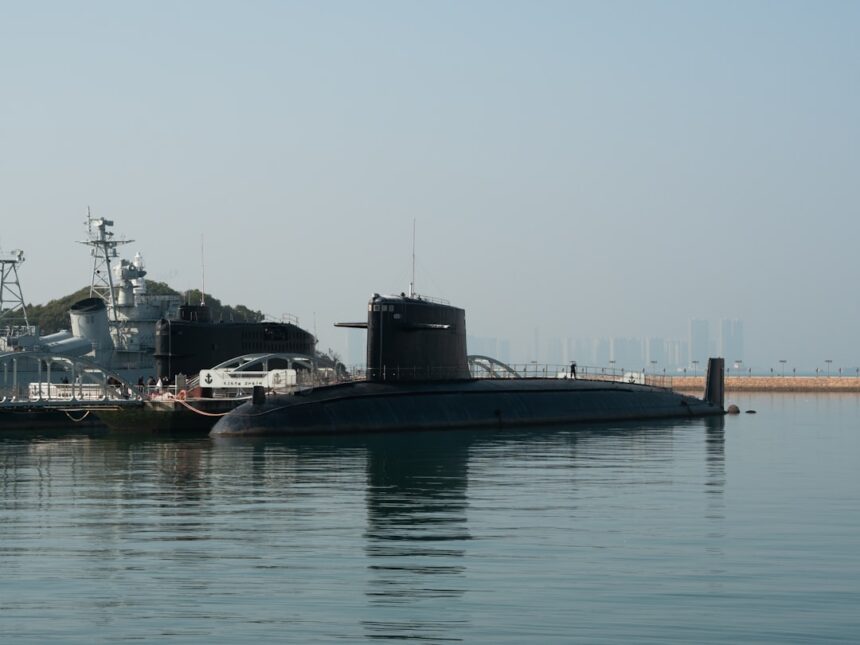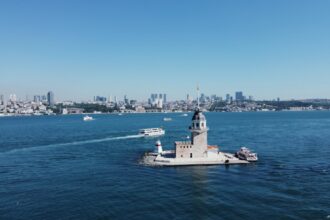Hyman G. Rickover, often referred to as the “Father of the Nuclear Navy,” was a pivotal figure in the development of nuclear propulsion for submarines and surface ships. Born in 1900 in Poland and immigrating to the United States at a young age, Rickover’s journey was marked by an unwavering commitment to engineering excellence and a profound understanding of nuclear technology.
His career in the U.S. Navy began in 1922, and over the decades, he rose through the ranks, ultimately becoming a rear admiral. Rickover’s contributions to naval technology were not merely technical; they were also deeply rooted in his philosophy of leadership, accountability, and rigorous training.
S. Navy’s approach to warfare and defense.
His insistence on high standards and thorough training for personnel ensured that the Navy was not only equipped with advanced technology but also staffed by highly skilled individuals capable of operating it safely and effectively. Rickover’s legacy is one of innovation, discipline, and a relentless pursuit of excellence that continues to influence naval operations today.
Key Takeaways
- Hyman G. Rickover was a pioneering figure in the development of nuclear submarines and his contributions revolutionized naval warfare.
- The birth of the nuclear submarine marked a significant advancement in naval technology, providing a new level of stealth, endurance, and strategic capability.
- Rickover’s leadership and influence on the Navy were characterized by his relentless pursuit of excellence, safety, and innovation in nuclear propulsion.
- The impact of the nuclear submarine on naval warfare has been profound, reshaping strategic thinking and providing a powerful deterrent capability.
- The legacy of nuclear power in the Navy continues to shape the future of naval technology, with Rickover’s vision driving ongoing advancements in nuclear propulsion and safety.
The inception of the nuclear submarine marked a revolutionary shift in naval warfare, fundamentally altering the dynamics of undersea combat. The idea of using nuclear power for submarines emerged during the early years of the Cold War when the need for stealth and endurance became paramount. Traditional diesel-electric submarines had limitations in terms of range and operational time, often requiring frequent surfacing to recharge their batteries.
Rickover recognized that nuclear propulsion could provide an unprecedented advantage, allowing submarines to operate submerged for extended periods without the need for refueling. The development of the USS Nautilus was a monumental achievement that showcased the potential of nuclear technology in maritime operations. Launched on January 21, 1954, Nautilus was not only the first submarine to be powered by a nuclear reactor but also a symbol of American ingenuity during a time of intense geopolitical tension.
The successful operation of Nautilus demonstrated that submarines could remain submerged for months, travel at high speeds, and carry out complex missions without the limitations imposed by conventional power sources. This breakthrough laid the groundwork for an entire fleet of nuclear submarines that would follow, fundamentally changing naval strategy and capabilities.
Rickover’s Leadership and Influence on the Navy
Rickover’s leadership style was characterized by a unique blend of technical expertise and an uncompromising approach to accountability. He believed that the success of nuclear propulsion depended not only on advanced technology but also on the people who operated it. Under his guidance, rigorous training programs were established to ensure that personnel were well-versed in both the theoretical and practical aspects of nuclear engineering.
Rickover’s insistence on high standards created a culture within the Navy that prioritized safety, competence, and continuous improvement. His influence extended beyond technical training; Rickover was also known for his direct and often confrontational communication style. He was unafraid to challenge superiors and question established practices if he believed they compromised safety or effectiveness.
This approach earned him both admirers and detractors within the Navy hierarchy. However, his unwavering commitment to excellence ultimately led to significant advancements in naval technology and operational readiness. Rickover’s legacy as a leader is evident in the continued emphasis on training and accountability within the Navy’s nuclear program.
The Impact of the Nuclear Submarine on Naval Warfare

The introduction of nuclear submarines had profound implications for naval warfare strategies around the globe. With their ability to remain submerged for extended periods and travel at high speeds, these vessels became formidable assets in deterrence strategies during the Cold War. The stealth capabilities of nuclear submarines allowed them to operate undetected, making them ideal for intelligence gathering and strategic positioning without revealing their presence to adversaries.
Moreover, nuclear submarines changed the nature of naval engagements by introducing a new level of lethality and survivability. The ability to launch ballistic missiles from underwater provided nations with a second-strike capability that significantly altered military planning and international relations. The presence of nuclear submarines in various fleets around the world has contributed to a delicate balance of power, as nations recognize the strategic advantages these vessels confer.
The impact of nuclear submarines on naval warfare continues to be felt today, as they remain central to modern military strategies.
The Legacy of Nuclear Power in the Navy
| Metrics | Data |
|---|---|
| Number of nuclear-powered vessels | Over 80 |
| Years of nuclear-powered operations | Over 60 |
| Nuclear-powered aircraft carriers | 11 |
| Nuclear-powered submarines | Over 70 |
| Accidents involving nuclear-powered vessels | Less than 10 |
The legacy of nuclear power within the U.S. Navy is one of innovation and transformation. Since the launch of USS Nautilus, nuclear propulsion has become a cornerstone of naval operations, enabling ships to operate with greater efficiency and effectiveness than ever before.
The Navy’s commitment to maintaining a fleet of nuclear-powered vessels has not only enhanced its operational capabilities but has also set a standard for other navies around the world. Nuclear power has allowed for longer deployments and reduced logistical challenges associated with fuel supply. This capability is particularly crucial in modern warfare, where rapid response times can be critical.
Additionally, the Navy’s investment in nuclear technology has spurred advancements in related fields, including reactor design, safety protocols, and environmental considerations. The ongoing commitment to nuclear power reflects Rickover’s vision for a technologically advanced Navy capable of meeting contemporary challenges while ensuring safety and reliability.
Rickover’s Vision for the Future of Naval Technology
Rickover’s vision extended beyond immediate technological advancements; he foresaw a future where naval technology would continue to evolve in response to emerging threats and challenges. He believed that innovation should be driven by a deep understanding of engineering principles combined with practical experience. This philosophy encouraged a culture of continuous learning within the Navy, where personnel were expected to adapt to new technologies and methodologies.
In addition to advocating for advanced propulsion systems, Rickover emphasized the importance of integrating new technologies into naval operations seamlessly. He understood that technological advancements must be accompanied by comprehensive training programs and robust safety measures to ensure their effective implementation. His foresight regarding the interplay between technology and human factors remains relevant today as the Navy continues to explore cutting-edge innovations such as unmanned systems and artificial intelligence.
The Continued Relevance of Nuclear Submarines in Modern Warfare

As global security dynamics evolve, nuclear submarines remain highly relevant in contemporary military strategies. Their unique capabilities allow them to serve multiple roles, from strategic deterrence to intelligence gathering and special operations support. In an era characterized by asymmetric threats and regional conflicts, nuclear submarines provide nations with a flexible tool for projecting power while minimizing risks associated with surface engagements.
Moreover, advancements in missile technology have further enhanced the strategic value of nuclear submarines. Modern vessels are equipped with advanced weaponry capable of striking targets with precision from great distances while remaining hidden beneath the waves. This capability not only deters potential adversaries but also allows for rapid response options in crisis situations.
As nations continue to invest in their submarine fleets, it is clear that nuclear-powered vessels will play an integral role in shaping future naval warfare.
Rickover’s Influence on Nuclear Safety and Regulation
Rickover’s commitment to safety was paramount throughout his career, particularly given the inherent risks associated with nuclear technology. He recognized that the successful implementation of nuclear propulsion depended on rigorous safety protocols and regulatory frameworks designed to protect both personnel and the environment. Under his leadership, the Navy established comprehensive safety standards that have since become benchmarks for nuclear operations across various sectors.
His influence extended beyond military applications; Rickover’s advocacy for stringent safety measures contributed to broader discussions about nuclear regulation at national and international levels. He understood that public trust in nuclear technology hinged on transparency and accountability. As such, he championed initiatives aimed at improving safety culture within organizations involved in nuclear operations, emphasizing that safety should never be compromised for expediency or cost-cutting measures.
The Global Impact of Nuclear Submarines
The proliferation of nuclear submarines has had significant global implications, reshaping international relations and defense strategies among nations. As more countries develop or acquire nuclear-powered submarines, concerns about regional stability and arms control have intensified. The presence of these vessels can act as both a deterrent against aggression and a source of tension among rival powers.
Furthermore, nuclear submarines have become symbols of national pride and technological prowess for many nations. Countries such as Russia, China, India, and others have invested heavily in their submarine programs as part of broader military modernization efforts. This trend underscores the importance of maintaining robust dialogue among nations regarding arms control agreements and non-proliferation efforts to mitigate potential conflicts arising from submarine capabilities.
The Future of Nuclear Submarines and Naval Technology
Looking ahead, the future of nuclear submarines appears promising yet complex as technological advancements continue to reshape naval capabilities. Innovations such as advanced materials, artificial intelligence integration, and enhanced stealth technologies are likely to redefine submarine design and operational strategies. These developments will enable navies to maintain their competitive edge while addressing emerging threats in an increasingly dynamic security environment.
Additionally, discussions surrounding sustainability and environmental impact are becoming more prominent within naval circles. As concerns about climate change grow, there may be increased scrutiny regarding the lifecycle management of nuclear vessels and their environmental footprint. Balancing operational effectiveness with environmental responsibility will be crucial as navies navigate future challenges while honoring Rickover’s legacy of excellence.
Hyman G. Rickover’s contributions to naval technology have left an indelible mark on both the U.S. Navy and global maritime operations. His vision for nuclear propulsion revolutionized naval warfare while establishing standards for safety, training, and accountability that continue to resonate today. As nations grapple with evolving security challenges, Rickover’s legacy serves as a reminder of the importance of innovation driven by rigorous engineering principles. The ongoing relevance of nuclear submarines underscores their significance in modern military strategy while highlighting the need for responsible stewardship of this powerful technology. As future generations build upon Rickover’s foundation, they must remain committed to excellence in both technological advancement and safety practices—ensuring that his vision endures as a guiding principle for naval operations worldwide.
Admiral Hyman G. Rickover, often referred to as the “Father of the Nuclear Navy,” played a pivotal role in the development of nuclear-powered submarines, revolutionizing naval warfare and strategy. His relentless pursuit of excellence and innovation led to the creation of the first nuclear-powered submarine, the USS Nautilus, which set the stage for modern naval capabilities. For a deeper understanding of Rickover’s impact and the evolution of nuclear submarines, you can explore a related article on this topic by visiting In The War Room. This resource provides insightful perspectives on military advancements and historical milestones, offering a comprehensive look at Rickover’s enduring legacy.
WATCH THIS! America’s Nuclear Navy Was Born From Espionage
FAQs
What is a nuclear submarine?
A nuclear submarine is a submarine powered by a nuclear reactor. This allows it to operate underwater for extended periods of time without the need to surface for refueling.
Who was Hyman G. Rickover?
Hyman G. Rickover was a United States Navy admiral who is often referred to as the “Father of the Nuclear Navy.” He played a key role in the development of nuclear propulsion for submarines and aircraft carriers.
What was Hyman G. Rickover’s contribution to nuclear submarines?
Hyman G. Rickover was instrumental in the development and implementation of nuclear propulsion for submarines. He oversaw the construction of the world’s first nuclear-powered submarine, the USS Nautilus, and was a driving force behind the expansion of the nuclear submarine fleet.
How do nuclear submarines work?
Nuclear submarines use a nuclear reactor to generate heat, which is then used to produce steam to power turbines and propel the submarine. The reactor also provides electricity for the submarine’s systems and equipment.
What are the advantages of nuclear submarines?
Nuclear submarines have several advantages over conventional diesel-electric submarines, including longer endurance, greater speed, and the ability to operate without the need for frequent refueling. They also offer increased stealth and reduced reliance on external sources of air.
Are there any safety concerns associated with nuclear submarines?
While nuclear submarines are designed with multiple safety features and protocols, there are inherent risks associated with nuclear power. However, the U.S. Navy has a strong safety record with its nuclear-powered fleet, and stringent safety measures are in place to minimize the potential for accidents.




